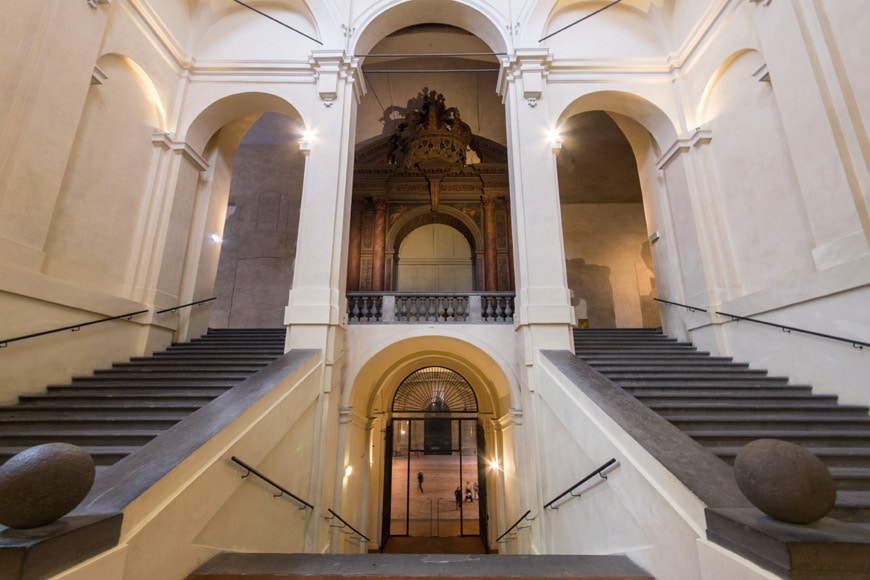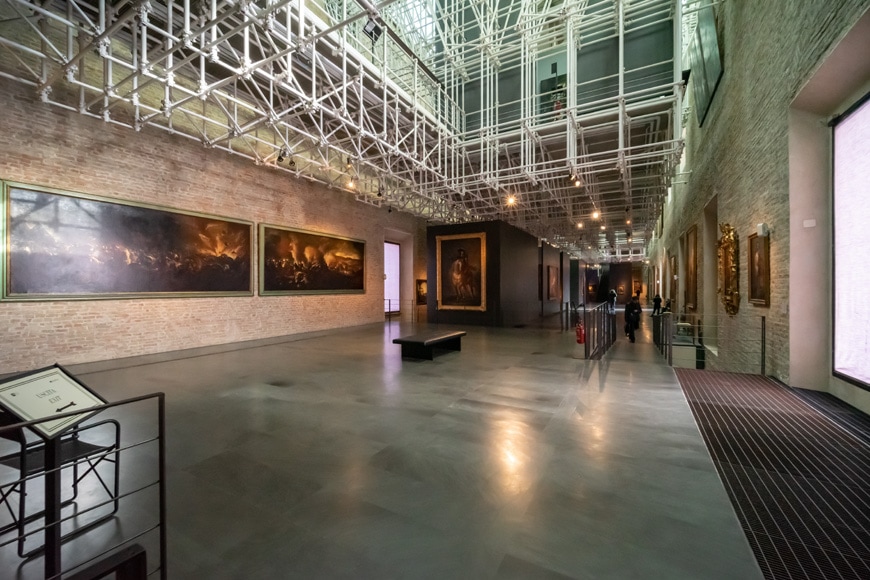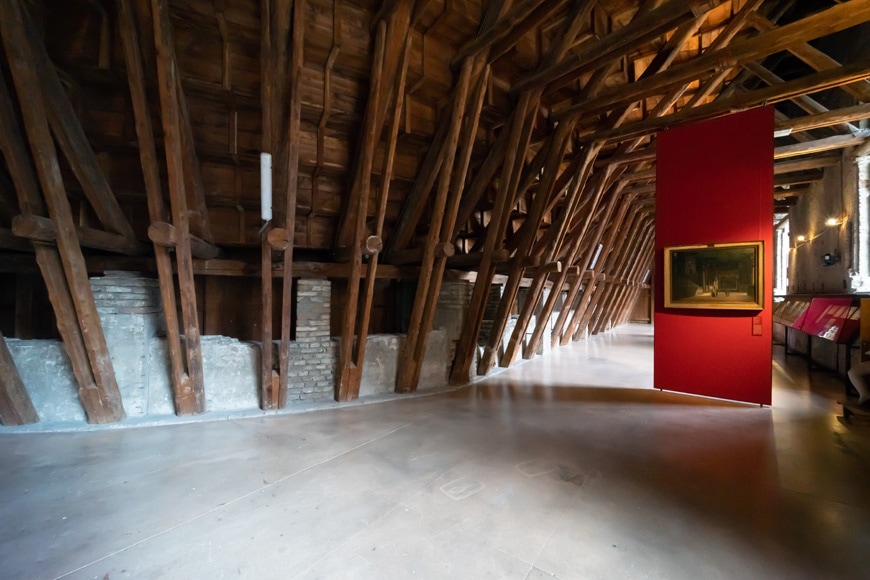Palazzo della Pilotta and Parma National Gallery
Emilia Romagna, Italy
Phone: + 39 0521 233309
Website: https://complessopilotta.it/en/welcome/
How our readers rate this museum (you can vote)

The Galleria Nazionale di Parma (National Gallery of Parma) is an art museum – housed in the historic Palazzo della Pilotta in Parma, northern Italy – mostly renowned for its collection of old masters’ paintings, including the famous Head of a Woman by Leonardo da Vinci.
Along with the Galleria, the Palazzo della Pilotta monumental complex also includes Parma’s National Archaeological Museum, the Bodoni Museum, the Palatine Library, and the reconstruction of the 17th-century Farnese Theater.
The palace, built in the late 16th century by Ranuccio Farnese, Duke of Parma, was badly damaged by bombing during World War Two, and partially reconstructed afterward. The piazza in front of the palace was built in the late 1990s after a design by Swiss architect Mario Botta.
Above: Palazzo della Pilotta, Parma; the main courtyard; photo © Riccardo Bianchini/Inexhibit
National Gallery of Parma, monumental stairwell; photo © Riccardo Bianchini/Inexhibit
Galleria Nazionale di Parma
The Galleria Nazionale was founded by Maria Louise Duchess of Parma in the early 19th century to publicly display the state collections of art of the duchy.
Today, the museum’s permanent exhibition features over 700 pieces – paintings, drawings, sculptures, architectural decorations, and objects of applied arts – dating from the Middle Ages to the 20th century.
Notable pieces on view include works by Benedetto Antelami, Agnolo Gaddi, Fra Angelico, Sandro Botticelli, Giulio Romano, Correggio, Parmigianino, Leonardo da Vinci, Hans Holbein the Younger, El Greco, Antony van Dick, Guercino, Canaletto, Giovanbattista Tiepolo, and Antonio Canova.
The Head of a Woman (also known in Italian as La Scapigliata, meaning lady of the disheveled hair in Italian) painting by Leonardo da Vinci is arguably the most famous artwork on display at the Galleria Nazionale.
Leonardo da Vinci, Head of a Woman (Aka “La Scapigliata”), ca. 1508, oil on wood; photo © Riccardo Bianchini/Inexhibit
National Gallery of Parma, interior views; photos © Riccardo Bianchini/Inexhibit
Museo Archeologico Nazionale
Founded in 1760 by Philip of Spain, Duke of Parma, the archaeological museum presents a large collection of antiquities and ancient artifacts.
The collection is divided into four main nuclei.
The Egyptian collection comprises statuettes, sarcophagi, papyri, scarab amulets, and vases. The Parma collection features various artifacts found in sites near the city, including prehistoric, Etruscan, Roman, and early-Middle-ages pieces.
Another section comprises Roman statues, sculptural pieces, and Greek vases collected by various members of the House of Farnese and the House of Gonzaga.
The core of the archaeological museum’s collections features many artifacts found in the 18th-century excavations of the ancient Roman town of Veleia, which include twelve marble statues dating back to the 1st century AD, bronze statuettes, and coins.
The entrance of the Archaeological Museum of Parma; photo © Riccardo Bianchini/Inexhibit
Museo Bodoniano
The Museo Bodoniano is dedicated to the famous 18th-century printer typographer, and type-designer Giambattista Bodoni (1740 – 1813), most known today as the creator of the Bodoni typeface. The museum features exhibitions focused on the history and techniques of book printing from the 15th to 19th century, as well as on Bodoni’s life and professional career
Teatro Farnese
The Teatro Farnese is one of the world’s most important examples of late Renaissance theater. Completed in 1618, after a design by architect Gian Battista Aleotti (also known as l’Argenta), the theater was inspired in its architecture by the Olympic Theater in Vicenza by Andrea Palladio. The Teatro Farnese is a monumental wooden structure, decorated with paintings and gypsum sculptures, with a U-shaped seating area that could accommodate up to 3,000 people. Largely destroyed during WWII, the theater was reconstructed in 1960 reusing a part of its original elements and decorations.
A permanent exhibition on the history of the building is housed in the basement of the theater.
The 17th century Farnese Theater, and the historical exhibition in the theater basement; photos © Riccardo Bianchini/Inexhibit
copyright Inexhibit 2025 - ISSN: 2283-5474


 (2 votes, average: 4.00 out of 5)
(2 votes, average: 4.00 out of 5)






